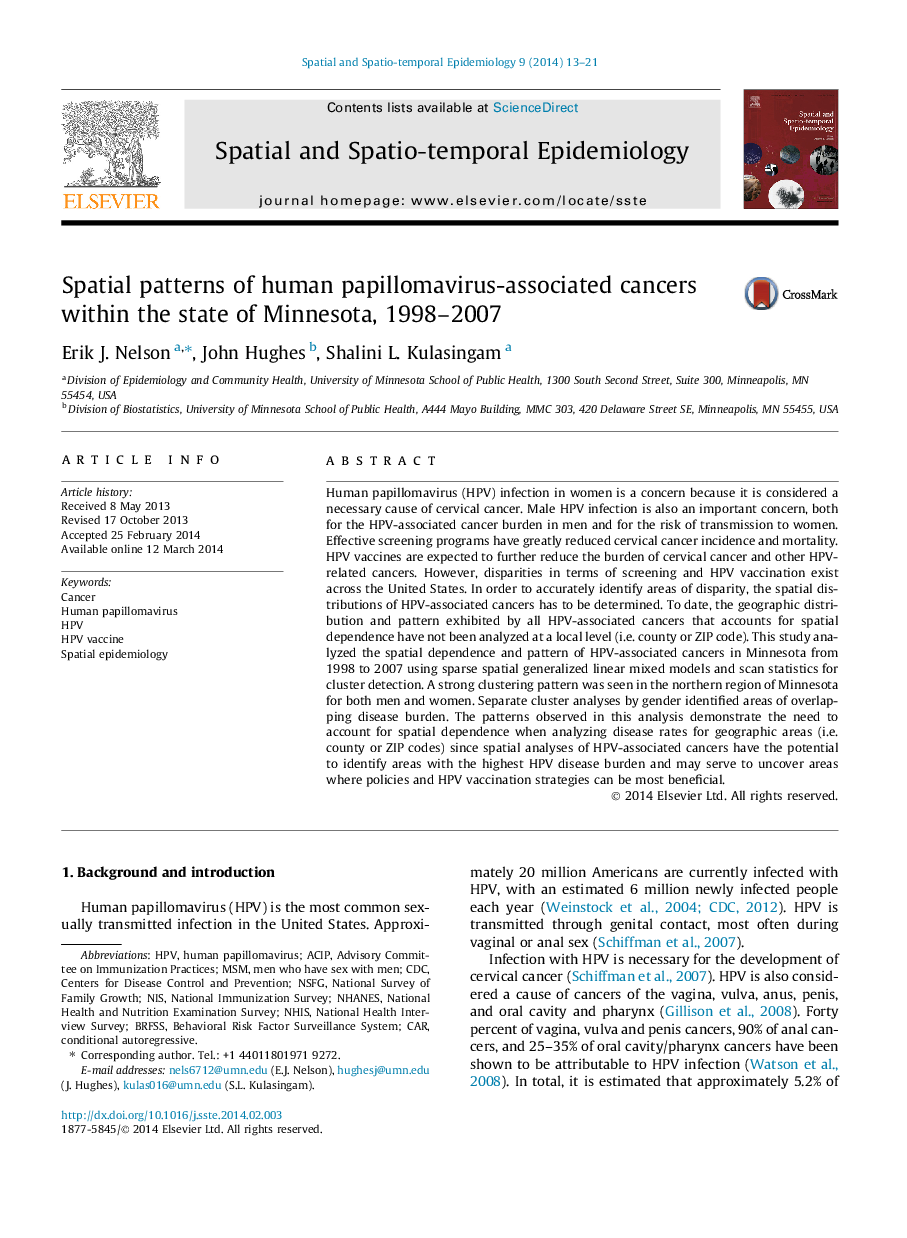| کد مقاله | کد نشریه | سال انتشار | مقاله انگلیسی | نسخه تمام متن |
|---|---|---|---|---|
| 1064330 | 1485768 | 2014 | 9 صفحه PDF | دانلود رایگان |

• We examine the spatial patterns of cancers associated with HPV in Minnesota.
• HPV vaccination recommendations for boys and girls appear to be justified.
• We report the potential for targeted HPV vaccine programs in regions of higher risk.
• More detailed spatial data for cancer screening and HPV vaccine uptake are needed.
Human papillomavirus (HPV) infection in women is a concern because it is considered a necessary cause of cervical cancer. Male HPV infection is also an important concern, both for the HPV-associated cancer burden in men and for the risk of transmission to women. Effective screening programs have greatly reduced cervical cancer incidence and mortality. HPV vaccines are expected to further reduce the burden of cervical cancer and other HPV-related cancers. However, disparities in terms of screening and HPV vaccination exist across the United States. In order to accurately identify areas of disparity, the spatial distributions of HPV-associated cancers has to be determined. To date, the geographic distribution and pattern exhibited by all HPV-associated cancers that accounts for spatial dependence have not been analyzed at a local level (i.e. county or ZIP code). This study analyzed the spatial dependence and pattern of HPV-associated cancers in Minnesota from 1998 to 2007 using sparse spatial generalized linear mixed models and scan statistics for cluster detection. A strong clustering pattern was seen in the northern region of Minnesota for both men and women. Separate cluster analyses by gender identified areas of overlapping disease burden. The patterns observed in this analysis demonstrate the need to account for spatial dependence when analyzing disease rates for geographic areas (i.e. county or ZIP codes) since spatial analyses of HPV-associated cancers have the potential to identify areas with the highest HPV disease burden and may serve to uncover areas where policies and HPV vaccination strategies can be most beneficial.
Journal: Spatial and Spatio-temporal Epidemiology - Volume 9, June 2014, Pages 13–21